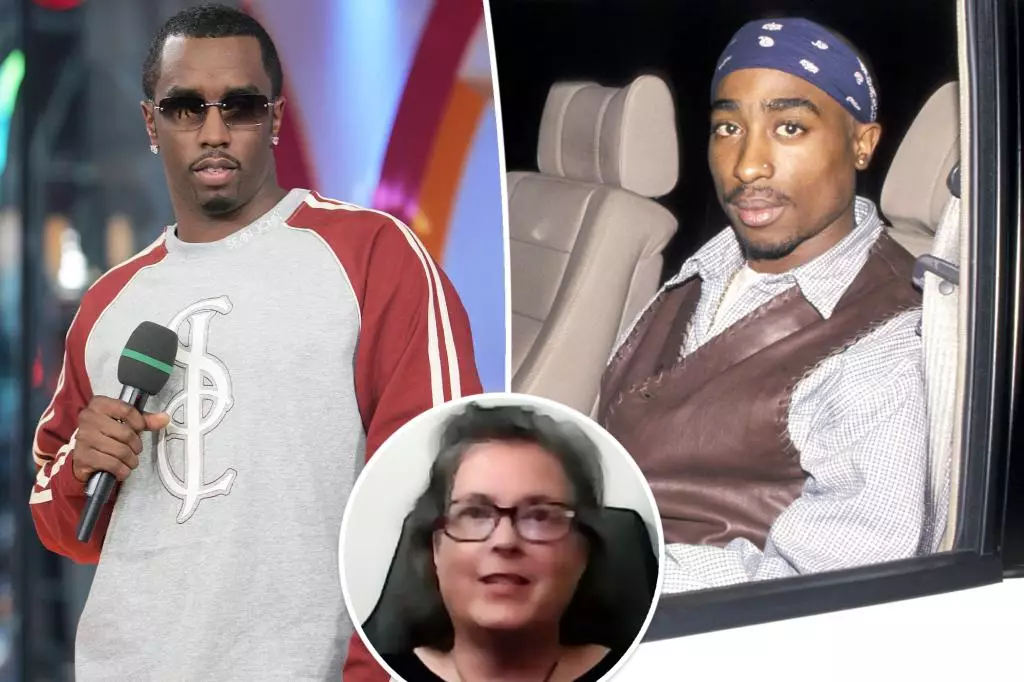The murder of Tupac Shakur remains one of the most tragic and controversial events in the history of hip-hop. With the rapper’s life taken prematurely in a drive-by shooting in Las Vegas in 1996, questions surrounding his death continue to reverberate through the music industry and law enforcement. At the center of the ongoing speculation is Sean “Diddy” Combs, a prominent figure in hip-hop and founder of Bad Boy Records. Sheryl McCollum, a crime scene investigator who has delved into the details surrounding Shakur’s demise, recently raised eyebrows by suggesting that Combs may have been connected to both Tupac’s 1994 shooting at Quad Studios and his fatal shooting in 1996.
McCollum traces the roots of the feud to the 1994 shooting incident that took place in New York City. Tupac was shot multiple times during what was reportedly a robbery at Quad Studios, where he suffered debilitating injuries. The ironic juxtaposition of a chaotic scene unfolding while Diddy and a massive entourage were present creates a compelling context. According to McCollum, it raises disturbing questions about the perceived protection afforded to Combs and his associates. She argues that if robbery was the motive, the disparity between the treatment of Shakur and the well-guarded entourage consisting of at least 40 people makes little sense. “How can one person be targeted for robbery while the others stand unscathed?” she posits, highlighting the discrepancies in the narrative surrounding that fateful night.
In the aftermath, Tupac openly accused Notorious B.I.G. and Bad Boy Records of being complicit in the attack. This assumed betrayal marks a critical turning point in Shakur’s life, from flourishing artist to a figure embroiled in a deadly feud. The lack of concern from Diddy and others when a bloodied Tupac limped into the studio only amplified the fears of betrayal and distrust within the hip-hop community.
The culmination of Shakur’s troubles came in September 1996, when he was shot and killed outside the MGM Grand in Las Vegas. McCollum’s analysis suggests a disquieting pattern: “Both times that Tupac Shakur is shot, he is trapped in something,” emphasizing the lack of escape routes in both incidents. Whether trapped in an elevator or confined within a vehicle, the lack of means to evade attackers further implicates someone who might have had inside knowledge about Shakur’s whereabouts.
Moreover, the absence of video footage from both incidents raises another layer of suspicion. McCollum argues that the lack of captured evidence shrinks the suspect pool, implying that anyone who had access to Shakur’s immediate environment during those critical moments would be a prime suspect. This leads to extraordinary speculation about Diddy and his possible involvement, as well as the unresolved questions that loom around the murder of Biggie himself, killed just a year later, suggesting a conspiracy that remains unsolved.
Recent reports reveal that Tupac’s family is contemplating a wrongful death lawsuit against Combs. Given the complexities of this case, which includes a densely woven narrative steeped in personal drama, gang tensions, and the quest for power, the legal ramifications could potentially reopen old wounds in the hip-hop community. The emergence of witnesses willing to testify about Diddy’s potential involvement further complicates matters. Notably, Duane “Keefe D” Davis, the man currently facing charges related to Tupac’s murder, suggested in past interviews that Combs allegedly had a financial motive behind the rapper’s killing, which adds a significant weight to the ongoing speculation.
As the quest for justice continues, the issues surrounding Tupac Shakur’s life and death remind us not only of his immense legacy but also of the unresolved tensions that plagued the hip-hop scene of the 1990s. With the legal proceedings potentially bringing new evidence to light, it is essential to approach this sensitive topic with the gravity it deserves. The actions, narratives, and perceptions surrounding Tupac’s violent death underscore the complexities of fame, betrayal, and the desperate search for authenticity in an industry rife with peril. Furthermore, this story is not merely about the individuals involved; it serves as a poignant reminder of the stakes involved in the world of hip-hop artistry and how quickly ambition can lead to tragedy.

